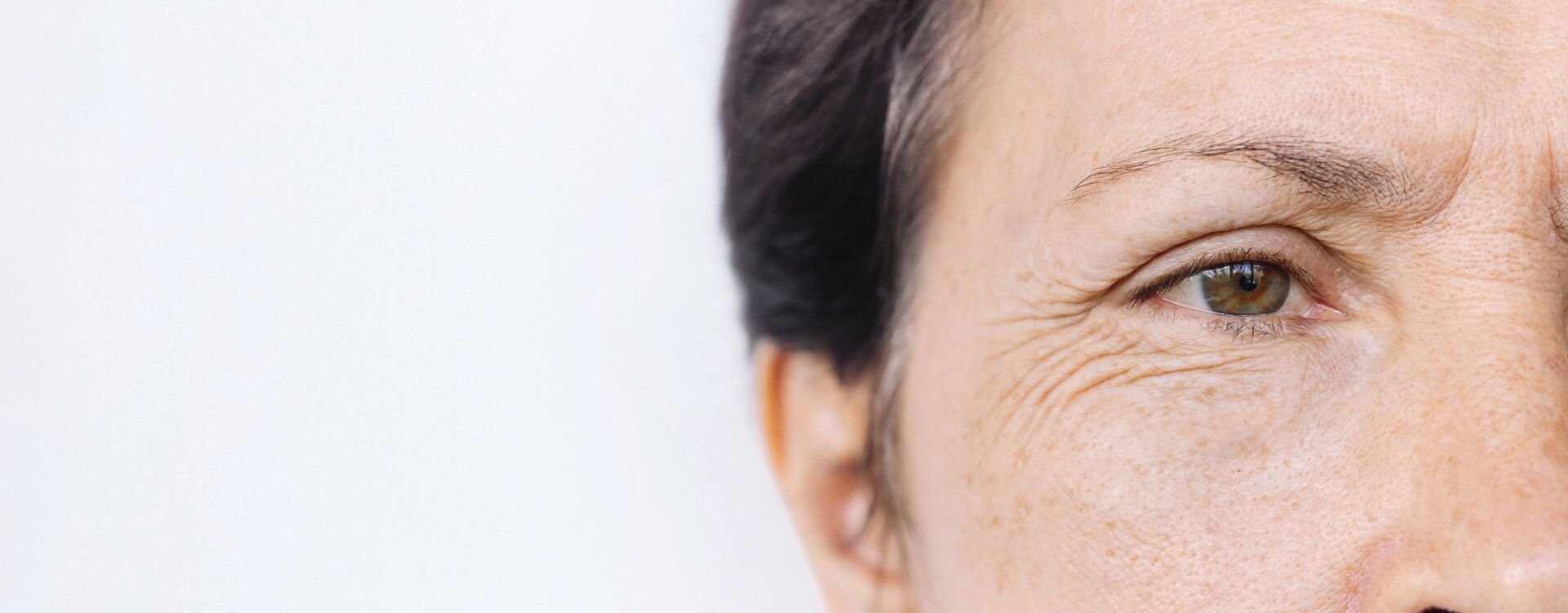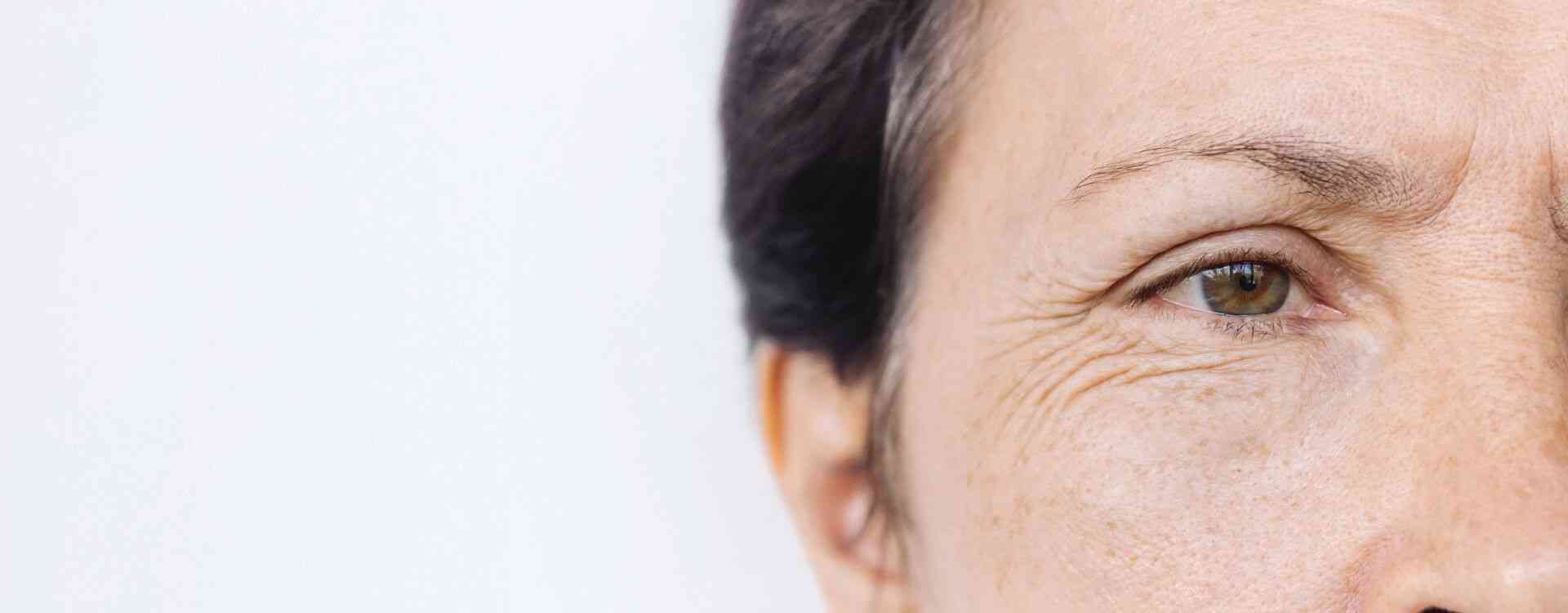Menu
Crows feet: causes and treatment
Whether we’re happy, sad, surprised or angry, there’s often no avoiding our natural facial expressions. With this and as we age, the fine lines on the outer corner of the eyes, also known as ‘crow’s feet’, can start to appear.
What are crow's feet?
Crow’s feet, commonly referred to as laughter lines or dynamic wrinkles, are the fine lines and wrinkles that appear at the outer corners of the eyes. These wrinkles are caused by repeated facial expressions, such as smiling or squinting, combined with a loss of elasticity in the delicate skin around the eyes.
Over time, the natural ageing process, along with environmental factors like sun damage, can lead to the formation of wrinkles that remain visible even when the face is at rest. Whilst SPF and a religious skincare routine can be fantastic preventatives for fine lines and wrinkles around the eyes can sometimes reach the point of no return. In these cases, non-surgical, injectable treatments such as Botox and dermal fillers can help rejuvenate and replenish the area affected.
What are crow's feet?
Crow’s feet, commonly referred to as laughter lines or dynamic wrinkles, are the fine lines and wrinkles that appear at the outer corners of the eyes. These wrinkles are caused by repeated facial expressions, such as smiling or squinting, combined with a loss of elasticity in the delicate skin around the eyes.
Over time, the natural ageing process, along with environmental factors like sun damage, can lead to the formation of wrinkles that remain visible even when the face is at rest. Whilst SPF and a religious skincare routine can be fantastic preventatives for fine lines and wrinkles around the eyes can sometimes reach the point of no return. In these cases, non-surgical, injectable treatments such as Botox and dermal fillers can help rejuvenate and replenish the area affected.
Crow's feet treatment prices
How to get rid of crow's feet?
Eliminating crow’s feet effectively often involves cosmetic treatments tailored to your specific skin type and goals. Botox injections, also known as anti-wrinkle injections, are a leading choice for reducing the appearance of wrinkles around the eyes. Botox works by temporarily relaxing the muscles responsible for dynamic wrinkles, such as those formed by frequent facial expressions like smiling or squinting. This treatment smooths the skin and prevents the formation of new laugh lines. Results from Botox typically become noticeable within 5-7 days and can last up to 3-4 months, depending on factors like facial skin movement and lifestyle. With minimal downtime and fast results, Botox offers a quick, non-invasive way to rejuvenate the eye area.
For static lines and deeper wrinkles, dermal fillers like Juvéderm provide a long-lasting solution. These hyaluronic acid-based fillers restore lost volume, boost skin elasticity, and plump the skin for a smoother appearance. By addressing the loss of elasticity caused by ageing, fillers can significantly improve the appearance of crow’s feet. Results from fillers often last between 12-15 months, making them an excellent choice for those seeking a more durable solution. Both treatments are non-surgical, offer minimal recovery time, and can dramatically enhance the facial appearance, helping you achieve a refreshed and youthful look.
How to get rid of crow's feet?
Eliminating crow’s feet effectively often involves cosmetic treatments tailored to your specific skin type and goals. Botox injections, also known as anti-wrinkle injections, are a leading choice for reducing the appearance of wrinkles around the eyes. Botox works by temporarily relaxing the muscles responsible for dynamic wrinkles, such as those formed by frequent facial expressions like smiling or squinting. This treatment smooths the skin and prevents the formation of new laugh lines. Results from Botox typically become noticeable within 5-7 days and can last up to 3-4 months, depending on factors like facial skin movement and lifestyle. With minimal downtime and fast results, Botox offers a quick, non-invasive way to rejuvenate the eye area.
For static lines and deeper wrinkles, dermal fillers like Juvéderm provide a long-lasting solution. These hyaluronic acid-based fillers restore lost volume, boost skin elasticity, and plump the skin for a smoother appearance. By addressing the loss of elasticity caused by ageing, fillers can significantly improve the appearance of crow’s feet. Results from fillers often last between 12-15 months, making them an excellent choice for those seeking a more durable solution. Both treatments are non-surgical, offer minimal recovery time, and can dramatically enhance the facial appearance, helping you achieve a refreshed and youthful look.
Treating crow's feet without Botox or dermal filler
If you’re looking for non-invasive treatments to reduce crow’s feet, our clinic offers laser therapy as an excellent alternative. By targeting the upper layers of the skin, laser treatments stimulate collagen growth, promoting firmer skin and gradually reducing the appearance of crow’s feet over time.
Laser Resurfacing to treat Crows feet
Fractional and Ablative Laser Resurfacing procedures can be used to treat crows feet.
During your consultation at our London clinic, our specialists will assess your facial skin and recommend the most suitable treatment for your skin condition, whether that’s Botox, fillers, or laser therapy, ensuring a personalised approach to achieving your desired results.
Our expertise
Our treatments are carried out by experienced doctors and nurses, ensuring your safety and satisfaction at every step. Leading our team is Dr Tapan Patel, a global expert in aesthetic treatments and the recipient of The Aesthetics Award 2023 for Outstanding Achievement in Medical Aesthetics.
Under Dr Patel’s guidance, our medical professionals undergo continuous training to stay up-to-date with the latest techniques. This commitment to excellence ensures you receive personalised care and achieve the best possible results.
Botox at PHI Clinic with Alice Hart Davis
Safe and effective treatment
Your safety is our priority at PHI Clinic. To ensure maximum standards of patient care, Botox and dermal filler injections are only ever carried out by our experienced, highly qualified doctors and nurses. All our patients have a thorough consultation before having Botox or dermal filler, and treatment is always carried out on a separate day. We believe it is essential for patients to be able to think before deciding whether to go ahead with their bespoke treatment plan.
What causes crow's feet?
As we start ageing, the body stops producing collagen (which keeps skin supple and firm) and elastin (which helps skin ‘bounce back’). So when the skin around the eyes constantly moves when we’re expressive, it stops going back to its smooth and plump ways. As well as ageing, the lines and wrinkles in this area can worsen due to sun exposure, poor skin care, smoking, genetics and stress.
Ageing
Crow’s feet are often one of the first signs of ageing as the skin around the eyes is much thinner compared to the rest of the face. Skin around our eyes also doesn’t produce oil like the rest of our skin, making it more delicate, and more likely to become dry and thin.
Sun exposure
We all know the dangers of UV exposure and sunburn, but for delicate under-eye skin, it can be even more damaging. Sun exposure can cause pigment producing cells to mature abnormally. Also, exposure to the sun’s rays can cause squinting which contributes to wrinkles and fine lines on the outer corner of the eyes
SPF
A hydrating SPF should always be a part of your skincare routine. Wearing SPF 30 or above can protect your skin from UV exposure and sunburn, which are significant contributors to crow’s feet. Whilst you’re in the sun, wearing sunglasses and a sun hat can also help prevent squinting which can also worsen lines and wrinkles around the eyes.
Poor skin care
If under-eye skin is not kept moisturised, the chances of lines appearing deeper and more pronounced increase dramatically. Skincare and intensive skincare treatments can address fine lines and wrinkles around the eye area. Whilst off-the-shelf skincare products are often the go-to, a tailored treatment plan by a skincare specialist could be the right way to go when it comes to preventing fine lines and wrinkles.
Smoking
Smoking causes blood vessels near the top layer of skin to become narrow, which limits the moisture and nutrients that skin has access to. This can make lines appear darker and deeper. Avoiding smoking is not only really important for your health, but for your skin too.
Genetics
Wrinkles around the eyes can also be hereditary, generally passed down from father to son and mother to daughter.
Stress
Fine lines and wrinkles around the eyes can be caused by a whole range of emotions. If you are stressed, your crow’s feet can be worsened.
Conclusion: Softening Crow’s Feet with Expert Care
Crow’s feet are a common sign of ageing, but they don’t have to define your appearance. With advanced treatments like Botox by Allergan, it’s possible to soften these lines while maintaining a natural, expressive look. At PHI Clinic, our experienced team is dedicated to helping you achieve smoother, rejuvenated skin with bespoke care and precision.
To explore your options and take the next step towards a refreshed appearance, book a consultation with us today. Call 0207 034 5999 to start your journey at PHI Clinic.
Crows feet frequently asked questions
Location
PHI Clinic
102 Harley Street,
London,
W1G 7JB,
United Kingdom
Tel: 02070345999
Opening Hours
Monday & Tuesday - 9:30am to 6:00pm
Wednesday & Thursday - 9:30am to 8:00pm
Friday - 9:30am to 5:00pm
Saturday - 11:30am to 12:30pm
Sunday - Closed
Opening times can change, if your appointment is outside of these times please contact the clinic for confirmation.


